Planners and urban designers often talk about the “human scale” in walkable areas. But what does that really mean — is it simply a case of “I know it when I see it”? Are there more specific ways for people to describe why some building frontages seem especially friendly and welcoming?
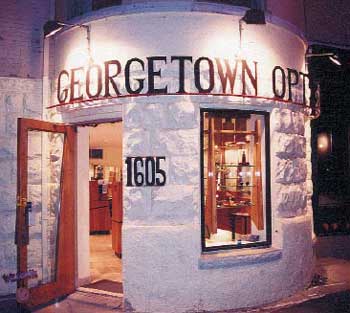
For the design of storefronts, a very useful booklet is Thrive: A Guide to Storefront Design in the District of Columbia (2002), by Derrick Lanardo Woody. The booklet covers the elements of human-scale storefronts in an easy-to-understand format and with plenty of photos.
The booklet provides examples and recommended/discouraged practices for each of the components of good storefronts. Here’s a sampling of the guidelines and photos:
- The Storefront — Places derive their identity from storefronts. Business owners are encouraged to imaginatively explore the relationship of their type of business (i.e. restaurant, bookstore, office, flower shop, etc.) and how that type translates into a unique storefront treatment within your business district.
- Window Base — Lifts display windows to a more visible level for passersby while protecting display windows from damage and weathering.
- Doors — Storefront doors are best recessed from the storefront wall so that customers are shielded from weather upon entering or leaving your business.
- Display Windows — Storefront transparency during both daytime and nighttime hours is critical. Visibility during both periods is important for continuous marketing and branding of the business, as well as promoting a sense of safety in the business district.
- Transom Windows — Provide architectural interest, ventilation and allow daylight deeper into the store’s interior.
- Frieze / Sign Band — Should be the first location considered for installing or replacing storefront signage. It should be maintained as a key component of the building design and as the business’ or tenant’s primary means of advertising the name of the business
- Commercial Signs — Businesses that have a lot of signs or signs that are big do not necessarily attract new customers. The more signs that a building has, the more cluttered and confusing the building facade appears.
- Awnings — Ideally, they should fit within or just over window openings. Awnings are particularly useful in shielding south facing storefronts, outdoor seating areas, and entrances from heavy sunlight exposure.
- Colors — The color selection ultimately becomes an integral part of your marketing strategy for your business. Your color choice should complement the larger building and that of other businesses within your business district.
- Lighting — Storefront lighting should be carefully coordinated with nearby street lighting.
- Security Systems — Solid grates actually make it more difficult for area residents and the police to properly police your business district to prevent theft or other crimes because they cannot see into the businesses.
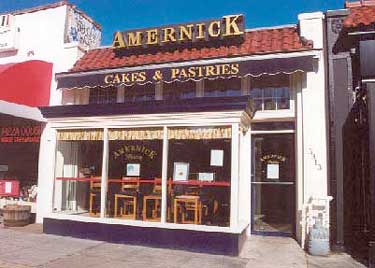
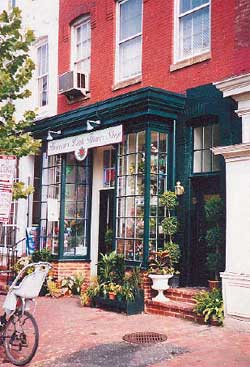
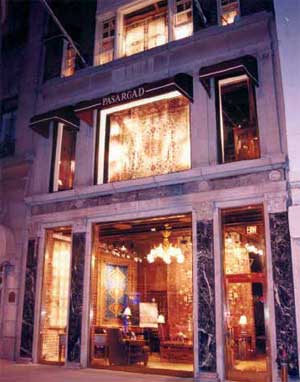
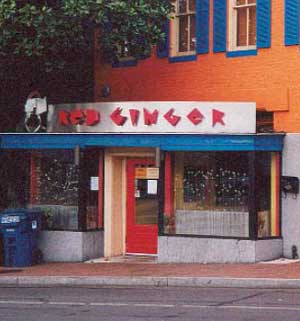
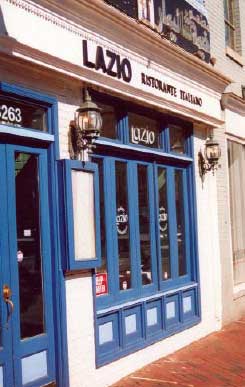
The booklet also provides a directory to all of DC’s neighborhood commercial areas, requirements for city-funded improvements, and contact information for relevant regulatory agencies and documents.
Just a small amount of attention to the fundamentals of storefront design can have large payoffs in image, business income, and the aesthetic and convivial qualities of the public realm. So if you’d like gain some architectural literacy about the components of good storefronts, A Guide to Storefront Design is a fine introduction.
Resources
The DC Office of Planning provided Thrive: A Guide to Storefront Design in the District of Columbia in separate pages. As a more convenient alternative, Ped Shed blog offers the complete document all in one file.
The booklet was written as part of the reSTORE DC initiative, a city program to help revitalize neighborhood business districts and small businesses through organization, design, promotion, and economic restructuring of neighborhood commercial areas.
Derrick Lanardo Woody, author of the booklet, was the coordinator of DC’s Great Streets Initiative that aims to transform under-invested corridors into thriving and inviting neighborhood centers.
See also Shopfronts, Blinds and Signs – A Guide to their Design by the Westminster (UK) City Council, November 29, 2004. Provides design guidance for traditional shopfronts in historic areas.

One of the things that strikes me with those images is location versus “human scale”. The retail in those photos range from Cleveland Park, Georgetown and Dupont Circle.
While the retail places are all in one to 3 story buildings, they are generally surrounded by areas of great residential density, be it a large area of town houses/garden apartments, or in the case of Cleveland Park, large scale multi-story residental buildings.
It is great and ideal to live in a community of “human scale” structures, but from an economic standpoint, it seems to thrive in the context of supporting residential density
What I observe from these examples is that human scale is about specific architectural design features and the way they’re arranged together. In DC a lot of the best-designed examples are in 1-3 story buildings, but human scale isn’t necessarily about height or the number of stories. I don’t think that’s the lesson that should be drawn.
DC certainly has some taller (more than 3 story) buildings with human scale storefronts; they’re just a lot less common. Most tall buildings are newer, and have storefronts that are 1) minimalist and mechanical, creating a dull, depleted pedestrian experience, or 2) cartoon-jive exaggerations of Ye Olde Towne Centre that cater to a suburban/mall/theme park perception of urban space.
It would be a good project, I think, to assemble a portfolio of tall buildings in DC that have welcoming, friendly storefronts.
The post Close Encounters With Buildings has more information about the components of human scale frontages. It bears repeating that, due to field-of-vision geometry, the pedestrian scale experience of a building is primarily the experience of the ground floor.
I am in the process of buying a building on Georgia Avenue near Military. The building is in bad shape, and in desperate need of a great new front and sign. I would love to have the advice of someone who could help guide me to create a great new store front. Any feedback would be appreciated.
Very helpful. As a designer it is very refreshing to have someone helping others with simple basic not complicated tips to instantly upgrade their venue. Thank you for sharing